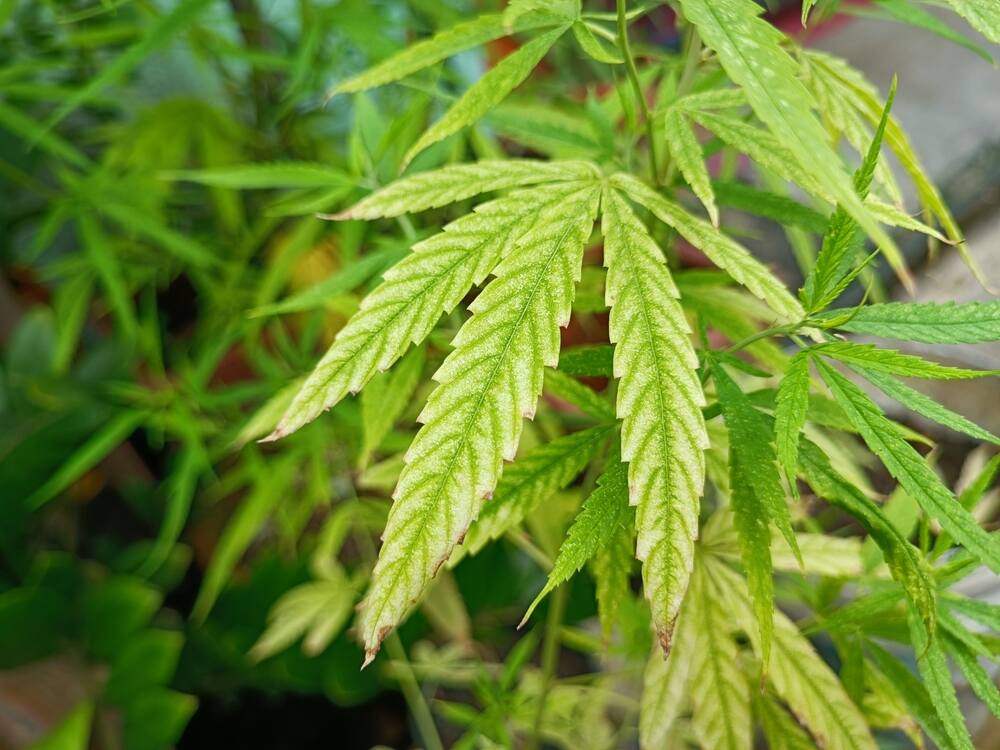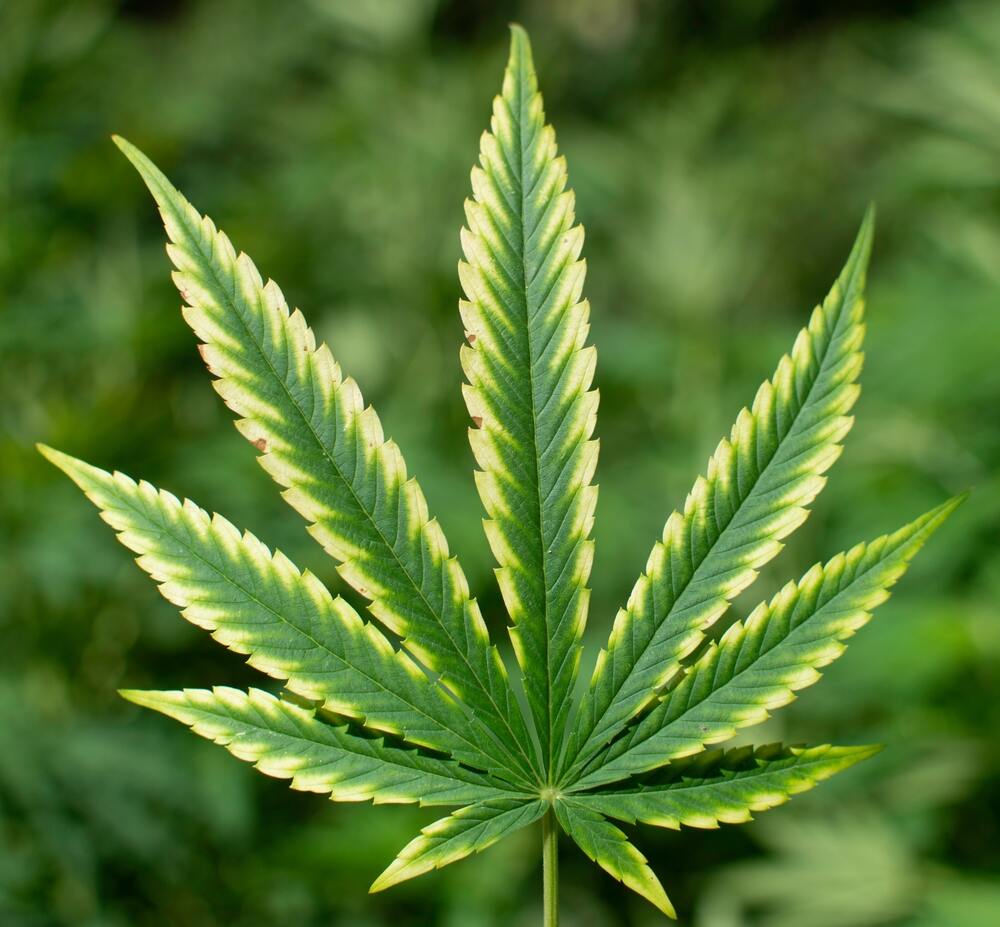The Best Fluffy Pancakes recipe you will fall in love with. Full of tips and tricks to help you make the best pancakes.

Identify and Fix Magnesium Deficiency in Cannabis
Growing healthy marijuana plants requires attention to detail, and one of the most common nutrient problems is magnesium deficiency. It’s something that can sneak up on your weed, but if you know what to look for, you can treat it quickly before it affects your yields. In this guide, I’ll walk you through how to identify and correct magnesium deficiency in your cannabis plants. Trust me, you’ll be back on track in no time!
What is Magnesium Deficiency in Cannabis?
Magnesium is a critical nutrient for cannabis, as it plays a major role in photosynthesis by being at the center of the chlorophyll molecule. When your plant is low on magnesium, it can’t create enough food for itself, which leads to all sorts of growth issues and affects the absorption of other nutrients like nitrogen and calcium.
Importance of Magnesium for Cannabis Growth
Magnesium helps your weed absorb light, and without it, your plant can’t produce the energy it needs to grow properly. This deficiency not only affects your plant’s ability to make energy but also weakens it, making it more susceptible to other nutrient deficiencies and absorption issues.
Why Cannabis is More Susceptible to Magnesium Deficiency
Cannabis is a bit of a nutrient hog. It has a higher demand for magnesium than many other plants, especially if you’re growing indoors. Indoor setups with hydroponics or even coco coir can leach out magnesium faster than soil, which can cause nutrient deficiencies to show up more quickly.
Symptoms of Magnesium Deficiency in Cannabis Plants

Identifying magnesium deficiency early can save you a lot of headaches. The symptoms often start subtle but become more severe over time.
Yellowing and Chlorosis in Older Leaves
One of the first symptoms you’ll see is the older leaves turning yellow, a condition called chlorosis. The yellowing typically begins between the veins of the leaves while the veins themselves stay green. This happens because magnesium is a mobile nutrient, meaning the plant pulls it from older leaves to send to new growth.
Brown Spots and Leaf Curling
If left untreated, yellow leaves can develop brown spots, and you might notice the edges of the leaves curling up. This is the plant’s way of showing you that it’s in distress. The damage will usually start on the lower leaves and work its way up.
Smaller, Less Dense Bud Development
During the flowering stage, magnesium deficiency can cause buds to be smaller and less dense than they should be. Your plant may survive, but the quality and size of your yield will take a hit.
Differences Between Magnesium Deficiency and Other Nutrient Deficiencies (e.g., Calcium)
It’s easy to mix up magnesium deficiency with calcium deficiency, but here’s the key difference: magnesium affects older leaves first, while calcium deficiency shows up in new growth. Calcium deficiency also tends to cause the new leaves to wrinkle and lose their shape, whereas magnesium leaves them structurally intact but discolored.
Causes of Magnesium Deficiency in Cannabis
Now that you know what magnesium deficiency looks like, let’s talk about what causes it.
Poor Soil Composition and Nutrient Imbalance
Sometimes the problem is right under your feet—or rather, in your soil. If your growing medium is missing magnesium, or your nutrients don’t have enough of it, your plant can’t get what it needs. Organic soil mixes can be low in magnesium, especially if they haven’t been amended properly.
Incorrect pH Levels in Soil or Hydroponic Systems
Magnesium deficiency is often caused by pH imbalances. If your soil or water pH is off, your plant won’t be able to absorb magnesium even if it’s present in the medium. Cannabis prefers a pH of 6.0 to 7.0 in soil and 5.5 to 6.5 in hydroponics. If the pH is outside these levels, magnesium becomes locked out.
Overwatering and Poor Drainage
Overwatering can also cause magnesium deficiency because it leads to poor root function. When the soil is constantly wet, the roots can’t breathe, and they struggle to take up nutrients, including magnesium. Poor drainage has a similar effect, causing nutrients to wash away before they can be absorbed.
Using Hard Water or Nutrient Leaching
If you’re using hard water, it can interfere with nutrient absorption, especially magnesium. Hard water contains high levels of calcium and other minerals, which can create an imbalance in your plant’s nutrient uptake. On the flip side, overwatering can lead to nutrient leaching, where essential nutrients, including magnesium, are washed out of the soil.
How to Fix Magnesium Deficiency in Cannabis
Alright, you’ve spotted the issue and know what’s causing it. Let’s treat it!
Step 1: Test and Correct pH Levels
First thing’s first—test the pH of your soil or hydroponic system. You can grab a pH meter online or at any gardening store. If the pH is off, adjust it with pH up or down products. A properly balanced pH will help ensure your plant can access the magnesium it needs.
Step 2: Adjust Watering Practices and Allow Soil to Dry
If overwatering is the cause, give your plant a break and let the soil dry out between waterings. I usually stick my finger about an inch into the soil to check for moisture before watering again. For hydroponic setups, check your system to ensure proper drainage.
Step 3: Apply Magnesium Supplements (e.g., Epsom Salt or Cal-Mag)
Adding a magnesium supplement is one of the fastest ways to fix the problem. Epsom salt is my go-to solution—just mix 1 teaspoon per gallon of water and give it to your plants. You can also use a Cal-Mag supplement, which has both calcium and magnesium, for a broader nutrient boost.
Step 4: Use Foliar Sprays for Quick Absorption
If you want to see results even faster, a foliar spray is the way to go. Mix magnesium with water and spray it directly on your plant’s leaves. This method allows the plant to absorb magnesium through the leaf pores, bypassing the roots altogether.
Step 5: Improve Soil Structure and Drainage
For soil growers, consider amending your medium with organic materials like compost or worm castings. These help improve soil structure and nutrient retention. Adding perlite or vermiculite can also help with drainage, preventing waterlogging and nutrient leaching.
How to Prevent Magnesium Deficiency in Cannabis
The best way to avoid future problems is to prevent magnesium deficiency before it happens. Here’s how you can do that.
Maintain Proper pH Levels for Optimal Nutrient Absorption
Make it a habit to test your pH levels regularly. I check mine at least once a week during the grow cycle. Keeping the pH in the sweet spot ensures that your plant has access to all the nutrients it needs, not just magnesium.
Use Nutrient-Rich Organic Soils or Super Soils
If you’re growing in soil, using a well-balanced organic mix is key. You can also make your own super soil, packed with everything your plant needs from seed to harvest. Just make sure your mix includes magnesium-rich amendments like dolomite lime or bat guano.
Regularly Monitor Water Quality and Nutrient Levels
Using clean, soft water is a good way to prevent nutrient lockouts. If you’re in an area with hard water, consider using a filter or collecting rainwater for your plants. Also, keep an eye on nutrient levels in your medium to prevent leaching or build-up.
FAQ
How can I identify magnesium deficiency in cannabis?
Look for yellowing between the veins of older leaves, brown spots, and leaf curling. The symptoms will start on lower leaves and work upward.
Can magnesium deficiency affect cannabis yields?
Yes, it can reduce bud size and density, especially during the flowering stage.
Is it safe to use Epsom salts for magnesium deficiency in cannabis?
Yes, Epsom salts are a quick and effective way to supplement magnesium in cannabis plants.
How long does it take to fix magnesium deficiency in cannabis plants?
You should see improvements in new growth within a week after correcting the deficiency.
What are the best ways to prevent magnesium deficiency in hydroponic systems?
Maintain proper pH levels between 5.5 and 6.5, use filtered water, and monitor nutrient concentrations regularly.
Magnesium deficiency in marijuana is common but totally manageable if you catch it early. By keeping an eye on pH levels, ensuring proper drainage, and supplementing when necessary, you can keep your plants healthy and ensure a great harvest. Stay vigilant and keep those weed plants happy!




